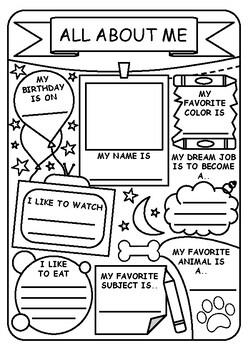
There are many advantages to sports high schools. These schools combine academic and athletic goals to produce elite athletes. Students get intensive training and compete in competitions every day. A student who graduates from such schools could pursue a professional career as a sports coach. Although there are some costs associated with attending a sports high school, the benefits far outweigh these disadvantages.
Sport is important
Students can learn more about physical activity and health through sport high schools. They also have the opportunity to build a sense of community. The project will provide many resources that will support learning at sport high schools. These include online tools and guides. ACPE will offer scholarships for students. These scholarships can help students pursue a career involving dance, health or business. Each year, there will be two scholarships that are available starting in Semester One of 2022.
A national survey of high-school students was conducted in the 2020-21 school year. The survey included questions about the different sports offered by high schools. The survey also inquires about students' perceptions regarding high school athletics.
Benefits
High school students have the opportunity to learn and improve their social skills by participating in sports. In fact, a recent study found that those who were active in sports had ten percent better grades in core subjects. Athletics in high school can also help students who are traditionally underserved.

Sports in high schools teach students valuable lessons about time management, self-discipline, and consistency. These lessons are invaluable for adults who will have to manage work, family, and other responsibilities. They promote brain health and encourage students to have a positive work ethic.
Costs
High school athletics are not the only sport that can be expensive. The Centers for Disease Control and Prevention has found that almost half of high-school students have participated in a sport within the past year. High school athletes spend an average of $126 per year. For participation fees, competitive sports teams may charge up to $500. This doesn't even include travel expenses, the cost of purchasing equipment and food and drink.
While school sports can be a good option for students and parents, they are becoming more difficult to afford. One in seven parents say that high school sports are too expensive. Administrators of schools must come up with alternative funding methods, especially for families with low incomes or those not eligible for financial waivers.
Successes
Students are able to gain academic and social support through school-sponsored sports programs. Students who participate in sports develop leadership, self-discipline, and motivation. They develop self-esteem, take control of their own lives and are better prepared to work than students who don't participate in athletics.
The study examined almost 1,200 public high school students from across the country. The study showed that schools with a higher percentage of sports-related students had lower crime rates, more suspensions, and less violent crimes. In addition, those who were involved in sports were more likely to be involved in pro-social activities and have greater financial success than their peers in other activities.

News sources
Local media are the best sources for high school sport news. Local media outlets are often close to high schools. This allows them to know about the best tournaments and athletes in the region. CBSSports and USA Today High School Sports also provide great news. ScoreStream and MaxPreps provide high school sport highlights and live scores.
When covering high school sports, livestreaming has become a popular practice. It all started ten decades ago when journalists discovered that high school sport fans have a right of live streaming.
FAQ
Are there any special skills needed for my chosen field?
You will need to be able to communicate effectively in writing if you wish to become a lawyer. You must communicate well with patients if you wish to become a nurse. If you want to become an accountant, you'll need excellent math skills. These are just two examples. Think about all the activities that you enjoy. What job is best for you? An engineer is someone who can design structures and machines. Basic math is essential to be successful in this field. You will need to be able to comprehend statistics and numbers in order for you to succeed in business. Communication skills are essential for teachers and other professions. You need to be able help and teach others.
What is the difference between public and private schools?
All students are eligible to attend public schools for free. They offer education from kindergarten to high school. Private schools charge tuition fees for each student. They offer education from preschool to college.
There are charter schools that are both privately operated and publicly funded. Charter schools don’t follow traditional curriculum. Instead, they give their students more freedom to learn what interests them.
Charter schools are very popular with parents who believe that all children should have equal access to education, regardless of their financial circumstances.
What is the difference in a university and college?
A university provides higher education. It offers undergraduate and postgraduate courses in various fields.
A college is often smaller and less famous than a university. It may offer fewer courses but often has its own specialist departments.
What is an alternative school?
Alternative schools are designed to provide students with learning disabilities with access to education through the support of qualified teachers who can understand their needs.
The aim of an alternative school is to provide children with special educational needs with the opportunity to learn within a normal classroom environment.
In addition, they are also given extra help when needed.
Alternative schools are not only for those who are excluded from mainstream schools.
They are accessible to all children, regardless if they have disabilities or abilities.
What is the purpose and function of education?
Education should be able to help students acquire the skills needed for employment. Education is not only academic. It is also a social pursuit where students learn from each others and gain confidence through engaging in activities such music, sports, and art. Education is about teaching students to think critically and create in order to be independent and self-reliant. What does it take to achieve high educational standards
Educational standards that promote student success are considered good. They provide a clear set of goals teachers work towards with their pupils. Educational standards should be flexible enough that schools can meet changing needs. A fair and equitable educational system must ensure that all children have equal chances of success no matter their background.
Statistics
- They are more likely to graduate high school (25%) and finish college (116%). (habitatbroward.org)
- These institutions can vary according to different contexts.[83] (en.wikipedia.org)
- And, within ten years of graduation, 44.1 percent of 1993 humanities graduates had written to public officials, compared to 30.1 percent of STEM majors. (bostonreview.net)
- “Children of homeowners are 116% more likely to graduate from college than children of renters of the same age, race, and income. (habitatbroward.org)
- Think of the rhetorical power of nineteenth-century abolitionist Harriet Beecher Stowe, Martin Luther King, Jr., or Occupy Wall Street activists with their rallying cry of “we are the 99 percent.” (bostonreview.net)
External Links
How To
what is vocational education?
Vocational Education, which is an educational system that prepares high school students for jobs after college or high school, provides them with training in specific skills required for a job (e.g. welding). This includes apprenticeship programs and on-thejob training. Vocational education is different from general education in that it prepares individuals for specific career paths rather than acquiring broad knowledge for future uses. The goal of vocational education is not necessary to prepare people for university study but to help them find jobs upon graduation.
Vocational education can take place at all levels of schooling. This includes primary schools, secondary schools and colleges, universities as well as colleges, technical institutes, technical colleges, trade schools, community college, junior colleges, four-year colleges, and colleges. In addition, there are many specialized schools such as culinary arts schools, nursing schools, law schools, medical schools, dental schools, veterinary medicine schools, firefighting schools, police academies, military academies, and other military schools. Many of these offer both academic instruction, and practical experience.
Over the past decade, a number of countries have made substantial investments in vocational education. These include Australia, Denmark and Finland, Germany. However, it is not clear if vocational education is effective. Some argue it doesn't improve students' employability, while others argue it prepares them for the future.
The U.S. Bureau of Labor Statistics has estimated that 47% of American adults hold a postsecondary certificate or degree related to their current occupation. This is a higher percentage among those who have more education. 71% are currently employed in fields that require postsecondary qualifications.
The BLS reported that almost half the adult population of the country had at least one form of postsecondary credential as of 2012. About a third of Americans were able to obtain a twoyear associate degree. Another 10% had a fouryear bachelor's. One in five Americans holds a master’s degree or doctorate.
The median annual salary for people with a bachelor's was $50,000. This compares to $23,800 for those who don't have a degree. For those with advanced degrees, the median wage was $81,300.
The median wage for people who did not finish high school was only $15,000. A person with a lower high school diploma earned $13,000 annually.